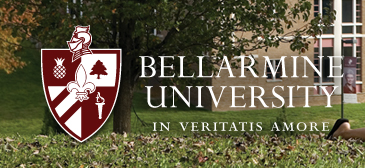Date of Project
4-7-2025
Document Type
Honors Thesis
School Name
School of Movement and Rehabilitation Sciences
Department
Exercise Science
Major Advisor
Dr. Sara Mahoney
Second Advisor
Dr. Joy Jacobs-Lawson
Abstract
Introduction: Half of undergraduate students are employed, meaning they must balance work with academics, physical activity (PA), and personal responsibilities. This study examines the potential negative impact of employment on PA, academic performance, and quality of life (QOL) among college students. Methods: The cross-sectional survey comprised 125 Bellarmine University students (Age 21.07 ± 3.40; 52% female, 48% male). Measures included the RAND SF-36 for QOL, the International Physical Activity Questionnaire Short Form (IPAQ-SF), and a custom academic and employment questionnaire. Racial and ethnic demographics included White (75.2%), Black or African American (11.2%), Hispanic or Latino (15.2%), Asian (4.8%), Multiracial (4.8%), and Other (0.8%). Statistical analyses included Spearman rank correlations, linear regression, Chi-square tests, one-way ANOVA, and t-tests to examine relationships between work variables (paid hours, total hours, work motivations) and outcomes: moderate PA (MPA), vigorous PA (VPA), total PA (TPA), GPA, and the eight RAND SF-36 QOL health domains. Results: Greater work hours were associated with lower vigorous and total physical activity, reduced general health scores, and increased fatigue. Total work hours significantly predicted declines in weekly physical activity. Physical activity levels differed by work type, with non-working students reporting the highest vigorous PA. Students engaged in paid work alone reported fewer physical limitations compared to other groups. Employment motivation played a key role: students working for field experience had higher GPAs and energy levels, while those working for enjoyment also reported greater energy. In contrast, students working to support family expenses experienced higher levels of bodily pain. Conclusion: Student employment, particularly longer work hours, may adversely affect physical activity and perceived health. However, the nature and motivation of employment shape these outcomes. Efforts to support student well-being should consider these complexities to help students better balance work, health, and academic demands.
Recommended Citation
Exposito Nuñez, Orlando, "A Cross-Sectional Analysis: Employment and Its Impact on Physical Activity, Academic Performance, and Quality of Life Among Bellarmine University Students" (2025). Undergraduate Theses. 198.
https://scholarworks.bellarmine.edu/ugrad_theses/198
Included in
Exercise Science Commons, Health Psychology Commons, Other Mental and Social Health Commons, Other Public Health Commons
